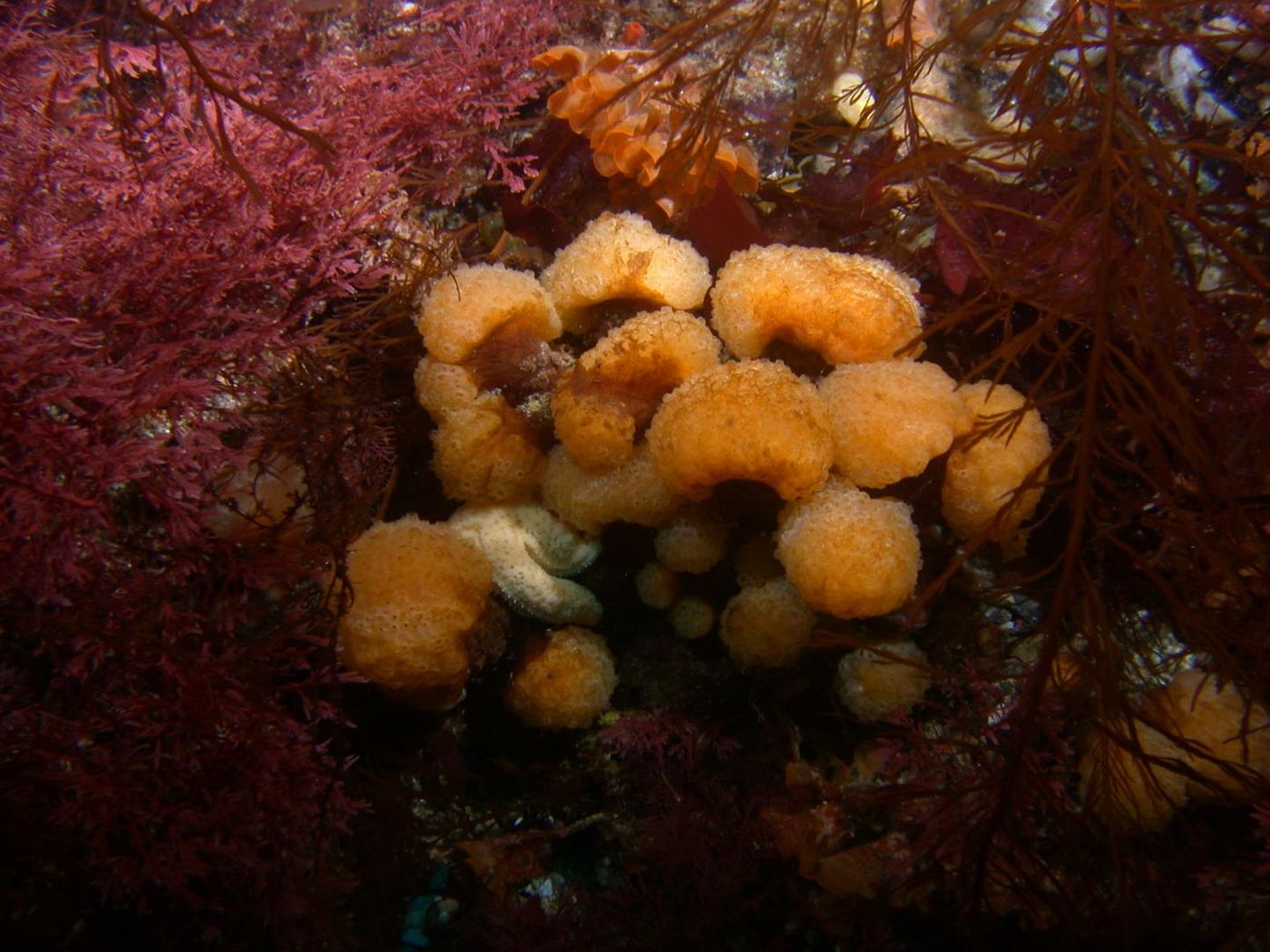Anticancer Compound Found in Marine Bacteria
Bacteria live in symbiosis with many animals in the world. These tiny single-celled creatures often play crucial roles in metabolism and food absorption in their host organism, and their physiological effects can have a significant influence on their host's health. Microbes, including those that live as part of a microbiome in or on a larger animal, have their own genomes, so they produce and release small molecules that have a biological effect. Sometimes microbes have been the source of some important drugs.
In two new reports recently published in Marine Drugs, researchers have revealed more about potential new medications that have been identified in marine animals.
Sea squirts are invertebrate animals that live on the floor of oceans around the world. Synoicum adareanum is a type of sea squirt that's native to the waters around Antarctica. They are known to carry a molecule with anti-melanoma properties called Palmerolide A.
"Our longer-term goal is to figure out which of the many bacteria within this species is producing palmerolide, but to do this, there is a lot we need to learn about the microbiome of S. adareanum," said research leader and the first author of one of the publications, Alison Murray, Ph.D. of the Desert Research Institute (DRI) in Reno. "Our new study describes many advances that we have made toward that goal over the last few years."
At the GEOMAR Helmholtz Centre for Ocean Research Kiel, scientists in the Marine Natural Product Chemistry Research Unit are also on the hunt for biomolecules that could make great new pharmaceuticals. Researchers analyzed a type of alga and a fungus that lives in symbiosis with it in Kiel Fjord to find remedies for skin cancer and infections. To find these compounds, the researchers have to purify the chemical constituents from the marine organisms.
"One of the biggest pitfalls in drug research is the isolation of already described natural molecules, using the 'classical' bioactivity-guided isolation process," explained Dr. Deniz Tasdemir, the senior author of the other study and head of Research Unit Marine Natural Product Chemistry at GEOMAR and GEOMAR Centre for Marine Biotechnology. "This approach is complicated and often prone to failures."
To overcome this problem, scientists used computational tools and screens for bioactivity. Their efforts showed that the brown alga Fucus vesiculosus (also known as bladderwrack) can interfere with the growth of a widely-known pathogen, methicillin-resistant Staphylococcus aureus (MRSA), a common cause of infection in hospitals.
"Algorithm-based bioinformatics strategies and machine learning tools have enabled us to map the massive metabolome of brown alga and at the same time predict the molecular clusters responsible for their antibiotic activity", said the first author of that report, Dr. Larissa Büdenbender.
Sources: AAAS/Eurekalert!, Desert Research Institute, Helmholtz Centre for Ocean Research Kiel (GEOMAR), Murray et al Marine Drugs 2020, Buedenbender et al Marine Drugs 2020









